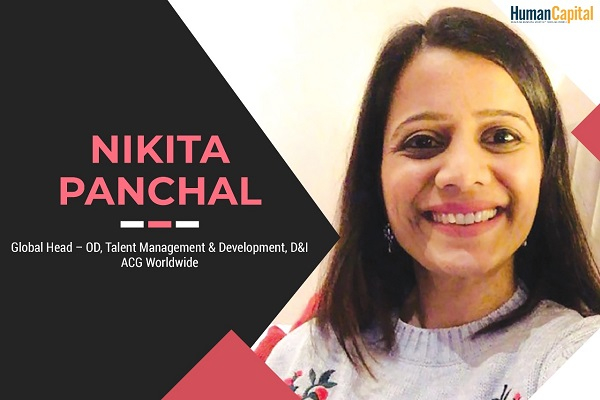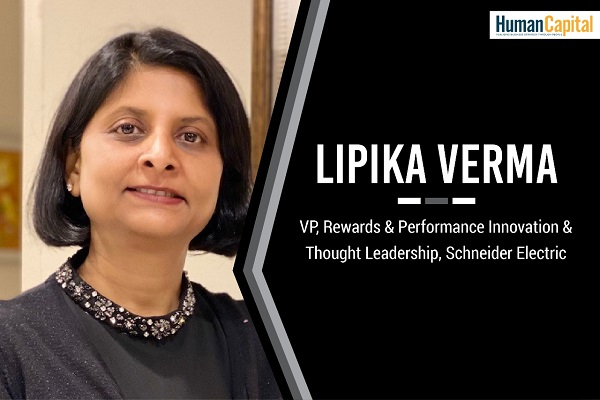Building an organisation that fosters wellbeing is a long journey. It is often easy to get lost in the noise of initiatives and the utilisation statistics of wellbeing services.
The beauty of a conversation is the gift of new emergence and possibilities. One of our young management trainees, who qualified for complete work from home, recently shared his remote working experience. He seemed excited to be able to stay in his hometown with his parents. However, it was not surprising to hear that given a choice, he preferred to return to the office. He was missing the ‘fun’ and ‘feels’ and felt that work consumed too much of his energy now, even though he could choose his own schedule and no longer had to travel two hours in Mumbai locals.
His concern piqued my interest, prompting me to have an exploratory conversation with other HR colleagues to learn what lies beneath the surface. Associate wellbeing, Employee Engagement, Employee Satisfaction, the list went on. As HR professionals, we often put these practices under the same bucket and fail to recognise the importance of wellbeing in creating a productive organisation.
Traditionally, wellbeing was focused on associates within the workplace – creating safe workspaces and providing them with physical and mental comfort. As we transitioned to the knowledge economy in the last few decades, more research was conducted into the area of wellbeing, and HR professionals started looking at the overall wellbeing of associates, both inside and outside the workplace.
The second major shift happened recently when the pandemic called into question the entire idea of what the workplace means and renewed the focus on wellbeing. There was a fundamental shift in the idea of wellbeing from being ‘organisation-centred’ to ‘person-centred’.
Defining wellbeing
As we shift towards thinking about person-centred wellbeing, we open a new paradigm in terms of the scope of what an organisation can do. The idea of person-centred wellbeing is derived from medical science and consists largely of physical, mental/emotional, financial, social/ environmental, and spiritual wellbeing. An organisation that wants to champion wellbeing must consider each of these areas when designing a wellbeing program that delivers results.
What organisations can do about wellbeing
When designing wellbeing programs, the key mistake organisations make is focusing on each dimension of wellbeing while ignoring the pillars that support it.
The top of the diagram shows the activities or initiatives that are most apparent on the surface. As we go deeper, the elements shown at the bottom of the pyramid ensure the success of the ones at the top pillars. Let’s take a closer look at each of these pillars and what organisations can do to make an impact:
Level 1: Outreach Solutions
Most organisations have a quick adoption formula and hence begin with outreach solutions. Outreach solutions consist of the different initiatives that organisations can take to address the Associates’ wellbeing challenges. They are inherently reactive, focusing on the solution rather than the root cause. The following are the typical trends in the outreach solutions that companies choose to use in areas of wellbeing:
1. Mental and emotional wellbeing: Counselling and therapy sessions, meditation and mindfulness, stress control offerings, and coaching around coping.
2. Physical wellbeing: Customised education/tracking programs around nutrition and sleep, virtual education about the science of exercise, gym memberships, telemedicine services, health-checkups, and company-sponsored healthcare packages.
3. Social wellbeing: Creating interest-based communities within the organisation, forums for informal connect, and opportunities for Associates to give back to society.
4. Spiritual wellbeing: Educational programs and interest groups for helping Associates connect with a larger purpose.
5. Financial wellbeing: Education programs and expert support/ coaching to help Associates make the right financial choices.
Level 2: Awareness
The primary criteria for an outreach solution to succeed is for associates to self-diagnose the challenges they face and then utilise the services made available by the organisation. Organisations can benefit from conducting a sense-check of their current awareness level and developing awareness programs that address each dimension of wellbeing.
The programs could include not just information on the services made available by the organisation but also the basics of wellbeing and how associates could take charge at the individual level. Continuous communication remains the key in awareness building, enabling associates to make a conscious choice.
Level 3: Policies and Processes
Any wellbeing program needs support at the institution level to succeed. There are two dimensions through which we can look at supporting the wellbeing agenda:
i. Policies: There are multiple factors organisations look at when building policies. Ease of understanding, fairness, standardisation of processes and culture remain key to designing a policy. In progressive organisations, wellbeing is quickly becoming the next important criterion in shaping policies to match the new normal.
Wellbeing is not only about launching new programs but more about how the organisation does its business. Policies, practices, decision-making processes have a greater impact on creating a workplace that’s centred on wellbeing. Organisations can score some quick wins in this area by first looking at policies that deal with operational processes, such as workplace guidelines including remote work, administration, leave, and occupational health and safety policies.
A step up to the policies would be the experience created for an associate in several HR processes like interviewing, communicating rejection, giving feedback, performance reviews, off-boarding, etc. The gentleness and intent of these processes can go a long way in creating moments of an everlasting wellbeing experience.
ii. Processes: Research shows one of the most significant factors contributing to wellness in the workplace is the perception of job control. It’s interesting to see the co-relationship between control and stress. Organisations that successfully create more empowerment, improve decision-making processes, and increase the speed of transaction are more likely to reduce stress and negative emotional attractors, positively impacting how associates feel and contribute.
Level 4: Organisational Culture
Culture is the final pillar that holds everything together. No wellbeing initiative or awareness campaign can succeed unless people take an active part in it. The traditional belief that performance and wellbeing are at polarities needs to change, beginning with managers’ mindsets, as they are the first HR point of contact for associates. Here are a few mindset shifts to consider:
.png)
One way to bring about these changes is to first generate these thoughts and then create associate awareness. Change starts at the top; leadership needs to hold conversational spaces to actively create champions of wellbeing. Leaders who become torchbearers of the culture are the true value creators in the organisation.
Conclusion
Building an organisation that fosters wellbeing can be a long journey. It is often easy to get lost in the noise of initiatives and the utilisation statistics of wellbeing services.
The key to ensuring sustainable change, both inside and outside workplaces, is to make everyone in the organisation a believer and champion of wellbeing. My wish is to see more organisations that create space for wellbeing to achieve business goals — and leadership that believes in it and walks the extra mile to evangelise a culture that puts wellbeing at the centre of all people and business strategies.
Is your organisation post-COVID-ready?
Trending
-
SBI General Insurance Launches Digital Health Campaign
-
CredR Rolls Out 'Life Happens' Leave For Its Employees
-
Meesho Announces 30-Week Gender-Neutral Parental Leave Policy
-
Microsoft Unveils Tech Resilience Curriculum To Foster An Inclusive Future
-
60% Indian Professionals Looking For Job Change Due To COVID: Survey
-
SpringPeople And Siemens Collaborate For Digital Transformation Push
-
86% Professionals Believe Hybrid Work Is Essential For Work Life Balance: Report
-
Almost 1 In Every 3 People's Personal Life Affected Due To Work Stress
-
Meesho Rolls Out Reset And Recharge Policy For Employees
-
80% Of Talent Leaders & Academics Say Pandemic Changed Skill Needs For Youth: Report
-
Hero Electric Rolls Out 'Hero Care' Program For Employees
-
Human Capital In Collaboration With ASSOCHAM Hosts Virtual Conference
-
IKEA India, Tata STRIVE Collaborate To Create Employability And Entrepreneurship Opportunities
-
SAP India, Microsoft Launch Tech Skilling Program for Young Women
-
DXC Technology, NASSCOM Collaborate For Employability Skills Program
-
Lenskart To Hire Over 2000 Employees Across India By 2022
-
Mindtree Launches Learn-and-Earn Program
-
Tata AIA Extends 'Raksha Ka Teeka' To Its Employees
-
Swadesh Behera Is The New CPO Of Titan
-
NetConnect Global Plans To Recruit 5000 Tech Professionals In India
-
Hubhopper Plans To Hire 60% Of Indian Podcasters By 2022
-
Corporate India Needs More Women In Leadership Roles: Report
-
Aon to Invest $30 Million and Create 10,000 Apprenticeships by 2030
-
Tech Mahindra Launches ‘Gift a Career’ Initiative for Upskilling of Youth
-
40% Women Prefer Flexible Working Options in Post-COVID World: Survey
-
3 out of 4 companies believe they can effectively hire employees virtually: Report
-
Vodafone , CGI and NASSCOM Foundation launch digital skills platform
-
Odisha: Bank, postal employees to deliver cash for elderly, differently-abled persons
-
Skill India launches AI-based digital platform for "Skilled Workforce"
-
Hiring activity declines 6.73% in first quarter: Survey
-
70% startups impacted by COVID-19 pandemic
-
Bajaj Allianz Life ropes in Santanu Banerjee as CHRO
-
Over 70 Percent MSMEs look at cutting jobs to sustain businesses
-
93 Per Cent employees stressed about returning to office post-lockdown
-
Johnson & Johnson India announces family benefits for same gender partners
-
Indian firms turning friendly towards working mothers
-
Welspun India names Rajendra Mehta as new CHRO
-
Wipro partners with NASSCOM to launch Future Skills platform



Human Capital is niche media organisation for HR and Corporate. Our aim is to create an outstanding user experience for all our clients, readers, employers and employees through inspiring, industry-leading content pieces in the form of case studies, analysis, expert reports, authored articles and blogs. We cover topics such as talent acquisition, learning and development, diversity and inclusion, leadership, compensation, recruitment and many more.
Subscribe Now












































Comment